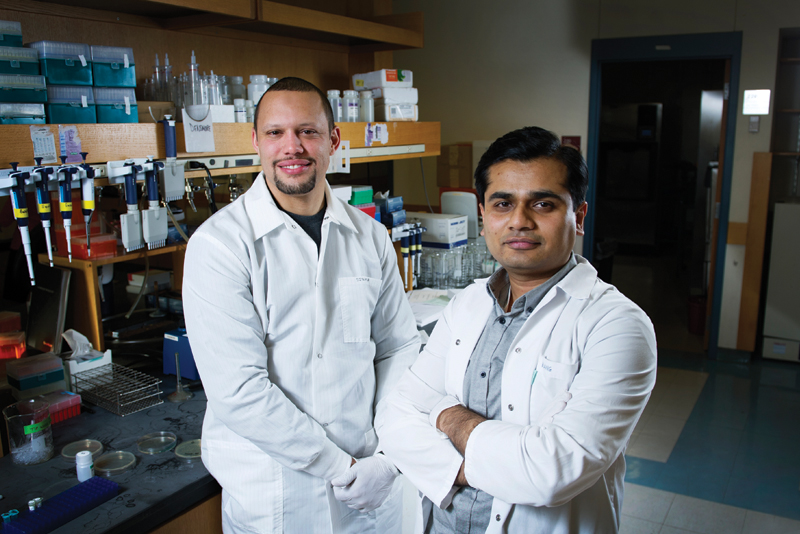Scaling Up Synthetic Biology
Engineering researchers develop powerful new software tools

Over the past 15 years, synthetic biology researchers have rewired and reprogrammed genetic “circuits” in living cells and organisms to enable them to perform specified tasks, both to improve our understanding of biology and to solve critical problems in health care, energy and the environment, food safety, global security, and other domains. While practitioners dream of engineering each new organism as expeditiously as today’s new mobile phone apps are produced, serious obstacles remain. Genetic parts are hard to find and tune, the final behaviors of engineered organisms are difficult to predict, and few tools exist that can handle the scale and complexity of the enterprise.
In recent years, however, two professors at Boston University’s College of Engineering, Douglas Densmore (electrical and computer engineering, biomedical engineering, bioinformatics) and Swapnil Bhatia (electrical and computer engineering), have joined forces to streamline synthetic biology from concept to design to assembly, encoding solutions in a rich suite of software tools. In a paper published in Nature Biotechnology, they and collaborating researchers at MIT demonstrated how their tools can be used iteratively to help synthetic biologists to specify, analyze, and improve large-scale designs for engineered biological organisms.
“Currently, people write down a sequence of genetic parts, one in each column, for each design,” says Bhatia. “You can do this correctly when you have a few designs, but when you want to do it for 100 designs, you begin to wonder if there’s a more powerful approach. Our algorithms allow researchers to describe whole spaces of designs, including those they might not have thought of because the possibilities are so vast.”
In the paper, Densmore and Bhatia showed the potential of their software tools by describing a network of 16 genes central to engineering nitrogen fixation—a key pathway which, if engineered into plants, could mitigate the need for fertilizer. Using specifications generated by the software, they and their collaborators “rewired” a network of genes extracted from one bacterial species, Klebsiella oxytoca, and transplanted it into another one, E. coli, that’s easier to work with in the desired application.
The researchers, who were funded by a $3.6 million Defense Advanced Research Projects Agency (DARPA) grant, thus demonstrated the first instance in which synthetic biologists ported a large gene cluster from one organism into another. It’s a process Bhatia likens to persistently tinkering with an app that runs on an iPhone to make it work on a Kindle, and he believes it will pave the way for many synthetic biology applications.
“This paper is an excellent example of parallel development of biological and computational tools,” says Densmore. “Recombinant DNA and cloning techniques have improved at a rapid pace, but the state of computational tools for engineering biology has lagged behind. People still use spreadsheets and notebooks for large projects. This has to change.”
Seeking to accelerate that change, Densmore and Bhatia are already focused on developing the next generation of tools for synthetic biology that will automatically learn biological design rules, propose genetic circuit designs, plan DNA assemblies, and automate much of the pipetting labor involved in the assembly of engineered biological systems.